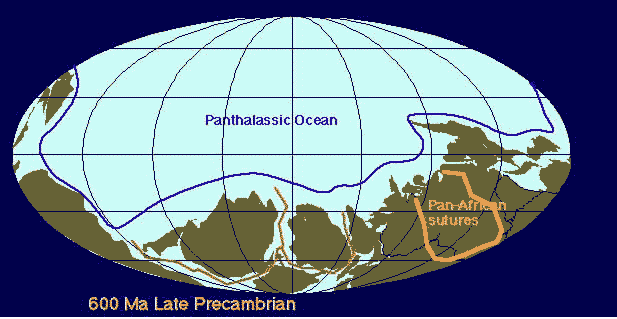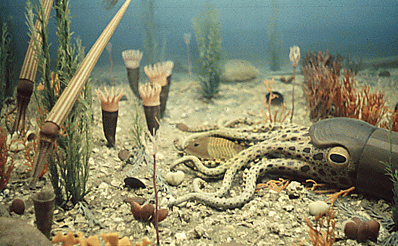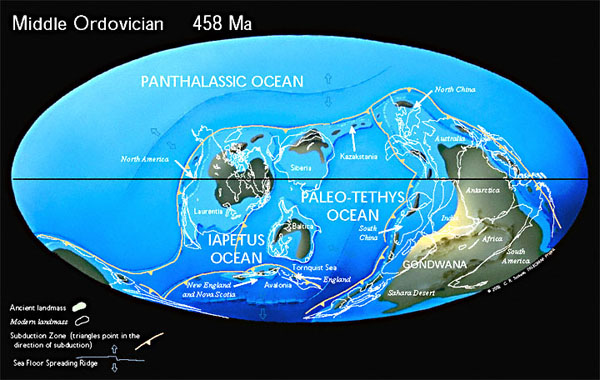Ordovician Environment
During the Ordovician Period, the surface of the earth was dramatically different
than it is today. Nearly all life on earth was in the oceans. The only land life
was in the form of very primitive plants very near the water line of the coasts,
probably mosses and algae and were of a non-vascular nature. Insects did not yet
exist, nor did amphibians or reptiles.
Fish as we know them did not exist, although a form of primitive fish began to appear
by the end of the Ordovician. Though Ordovician life sounds primitive by today's
standards, the life during this period was more advanced than life in the earlier
Cambrian Period. Ordovician life was characterized by a dramatic increase of the
shelly fauna, corals, and bryozoans. The shelly fauna include the brachiopods which
did exist prior to the Ordovician, but were less numerous and mostly inarticulated. The
Ordovician introduced numerous articulate brachiopods which have a tooth-and-socket
arrangement along their hinge line.
In order to understand how the environment of the Ordovician Period differed
from today (the Quaternary Period), it is necessary to realize that continental
drift has dramatically changed the face of the earth since the Ordovician Period.
The following animation illustrates how much the earth has changed from the Late
Precambrian Period (600 Million Years ago) through the Cretaceous Period
(70 Million Years ago).

In the case of what is today North America, only the newly forming Appalachian
Mountains (resulting from a mountain building episode known as the Taconic
Orogeny) and their surrounding environs were above sea level. Ohio, Indiana,
Illinois, and Michigan were innundated by a shallow sea known as the Sauk Sea.
This environment encouraged the development of corals, trilobites (primitive
arthropods), gastropods (snails), bryozoans, cephalopds (similar to squid), and
brachiopods (similar to clams and mussels).

By the end of the Ordovician Period, primitive jawless fish called Ostracoderms
appeared. These primitive fish were covered with bony plates and were among the
first vertebrates on the earth.
The following image shows how the earth looked approximately 450 Million Years
ago, during the Late Ordovician Period. The brown areas show the location of
the continents. Notice that many of today's continents were covered by shallow
seas.

The fossils found near Cincinnati and Southeastern Indiana are world renowned
for their abundance and state of preservation. This was made possible by the
conditions that existed in the area. In the Cincinnati area, shallow seas and
life dominated the environment. To the East, active volcanic mountain highlands
were being constantly eroded by the forces of nature. As the erosion progressed,
the sediment was carried downlope into the shallow Sauk Sea to the West. This
sediment buried many organisms under an airtight, muddy blanket which encouraged
the remarkable preservation seen in the fossils that were left behind. The
muddy blanket eventually turned into limestone which is found extensively in
Indiana, Kentucky, and Ohio.
|
